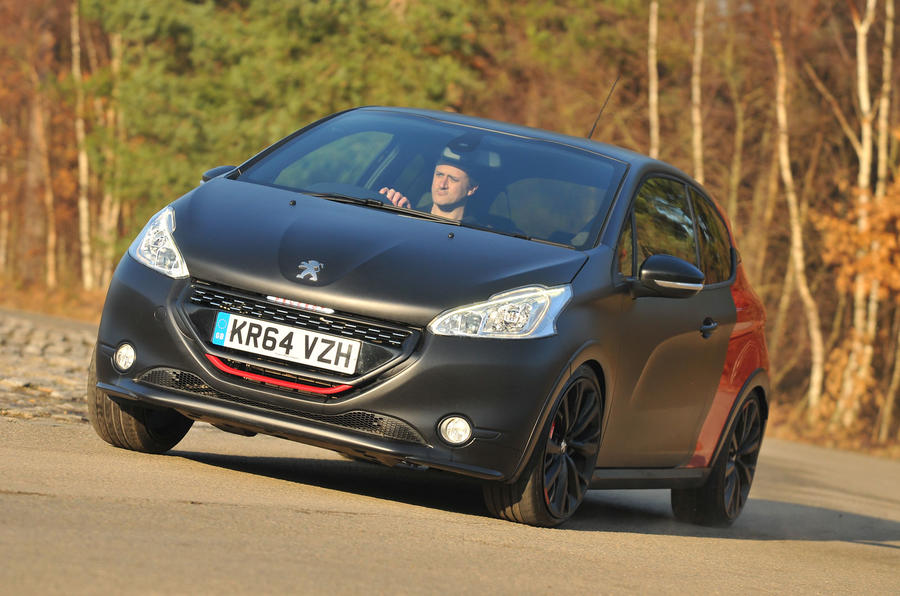The changes start with the 1.6-litre turbo motor, which has been fettled to produce a further 8bhp and 18lb ft of torque. The changes have also brought about a significant drop in CO2 emissions from the standard car, to just 125g/km.
Such diminutive gains in output were never going to result in an exponential performance boost, but nevertheless, 0-62mph drops by 0.3sec to 6.5sec. Whether it feels much faster is arguable, but there's no doubt the engine pulls well from low to mid revs, then invites you to rev it out, delivering an extra burst of enthusiasm in the final 2000rpm before the limiter.
Mechanically, the engine has an inherent smoothness, and from the outside it sounds good, too. Sadly, that doesn’t percolate into the cabin, where a rather run-of-the-mill engine note never manages to stir the soul like a Fiesta ST’s.
Top marks to Peugeot for offering its hottest 208 with a traditional six-speed manual gearbox, with revised ratios matched to the engine's power characteristics. It’s pleasantly slick, if lacking that rewarding clickety-clack of the best, such as the Fiesta ST's.
Peugeot Sport has effected the biggest changes to the 208’s suspension. The front and rear tracks have grown by 22mm and 16mm respectively and a further 10mm has been chopped from the ride height (the standard 208 GTi is already 8mm lower). Spring rates and damper settings have been tweaked, along with a modified front camber angle and wheel alignment. In a bid to dial out the standard car’s tendency to understeer, they’ve also softened the front anti-roll bar.
Along with the suspension upgrades, traction and drivability are aided by the adoption the same Torsen differential as the RCZ R coupé, as well as 18in alloys, shod with sticky 205-section Michelin Pilot Super Sport tyres. At the front, these are bolted to hubs carrying 323mm brake discs, clamped by four-pot Brembo calipers.
The results are impressive. Despite testing it on freezing Surrey roads, the GTi 30th showed decent traction off the line and when powering hard out of corners. It will torque steer, but if you apply the throttle sensitively you can feel the diff shifting drive between each front wheel, searching for the one with the most grip. The less than ideal conditions meant there was always going to be a fight between those Michelins and the greasy road surface, but it's impressive for a front-wheel-drive car with 205bhp.

























Join the debate
Add your comment
Its aweful
Its aweful
Special product